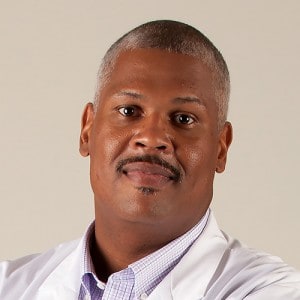After a major illness or injury, patients often need rehabilitation to get back to as normal and independent a life as possible.
Regional One Health’s Inpatient Rehabilitation Hospital has a stellar track record in terms of getting patients back to the things they love as quickly as possible.
The team relies on their experience, expertise and a compassionate, holistic approach that involves the patient and their loved ones in their plan of care.
Severely injured and ill patients come to Regional One Health’s Inpatient Rehabilitation Hospital with a common goal: to return to as normal and independent a life as possible.

Mario M. Ray, MD, MBA, FACP, CIME, is medical director of the Inpatient Rehabilitation Hospital. “We want to help the patients do as much for themselves as possible and reduce the burden of care for family members as well,” Dr. Ray said.
It takes hard work and determination, but data shows even though Regional One Health accepts more complex, severe cases than most facilities, its rate of discharge to the community is higher than the regional and national average.
Mario M. Ray, MD, MBA, FACP, CIME, medical director of the Inpatient Rehabilitation Hospital, explained what that means for patients: “When we say we send people back to the community, that means we’re discharging them to their home setting, not to a nursing home or long-term care facility.”
Amy Ogden, MBA/MHA, Administrator, Rehabilitation Services, said 84 percent of patients are discharged home, as opposed to the regional average of 77 percent.
They’re also getting well quicker – the average length of stay at Regional One Health is about a day shorter than similar facilities.
It’s an impressive achievement, especially considering the center’s patient profile.
“The vast majority are in the major multiple trauma category, which means they have spinal cord injuries and traumatic brain injuries on top of other issues – organ lacerations, bone fractures, etc.,” Ogden said. “Our patients tend to be very complex.”
How do they achieve such positive results? It starts with an expert team that goes the extra mile to create a healing environment.
Dr. Ray has spent his entire 14-year career at Regional One Health and brings the skills and experience not only of a rehab specialist, but of an internal medicine physician. “I’m very used to taking care of critically-ill patients,” he said. “Having internal medicine training along with inpatient rehab experience gives me the right skillsets to manage this type of patient. I know the patients. I see them every day. I can put out little fires before they become giant fires.”
Dr. Ray said the rest of his team brings similar attributes to the table.
Certified rehab nurses with specialized training are joined by physical, occupational and speech therapists certified in brain injury and spinal cord rehab. The unit has its own clinical pharmacist.

Patients benefit from the expert, specialized care of certified rehab nurses and physical; occupational and speech therapists certified in brain injury and spinal cord rehab; and a rehab clinical pharmacist.
“Most of our staff has been in rehab for many, many years,” Dr. Ray said. “They know how to provide both physical and emotional support.”
Because Dr. Ray and his team can care for acute medical issues, they accept patients for rehab sooner than other facilities. “Our patients typically start their rehab journey three or four days earlier than they would elsewhere,” he
said. “They’ve already been in the hospital for weeks or even months, so every day we save them is a win for that patient and the entire organization.”
Patients have reduced hospitalization risks like tissue breakdown, atrophy and infection. Also, moving them to a safe, effective rehab situation opens acute care beds for other patients in need.
Patients also benefit from being within a large health care system, Ogden said. Specialty care is available right within the hospital’s walls, and Dr. Ray has excellent relationships with external providers like psychiatrists to optometrists who can help as needed.
“We collaborate very well with our hospital partners,” Ogden said. “Those relationships help us facilitate patients’ journey through the continuum of care.”
Every patient has a team that includes a social worker and case manager who help pave the way for discharge, making sure the patient has the medical equipment, home health care, transportation, etc. they need to live at home safely.
“We want to help the patients do as much for themselves as possible and reduce the burden of care for family members as well,” Dr. Ray said.
Emotional support and quality of life are also crucial, and the team’s care philosophy reflects that. Dr. Ray said he is a firm believer that patients heal best when both their physical and emotional needs are addressed.

The staff at the Inpatient Rehabilitation Hospital works to meet not only patients’ physical needs, but their social and emotional needs as well.
Every patient has a spacious private room with comfortable amenities, and the staff works hard to engage with patients and provide activities that keep them active and interested.
They provide a robust recreational therapy program, and the facility has an ambassador program in which each staffer adopts a patient and checks on them regularly.
“We’ve designed our programs to keep patients motivated and keep their spirits up,” Dr. Ray said. “We’re proactive, and there are a lot of little things we do to make their stay more pleasant. It’s led to satisfaction scores in the high 90 percentile.”
They also put a focus on involving patients’ families in their care. Not only do family members and loved ones provide much-needed emotional support, they are encouraged to learn how to help the patient with day-to-day care.
Regional One Health Inpatient Rehabilitation Hospital accepts patients who can tolerate at least three hours of therapy a day five days a week. Patients can be admitted from a hospital, assisted living facility, primary care physician or even from home.
The facility is accredited by the Commission on the Accreditation of Rehab Facilities, meaning it adheres to the highest standards of care.